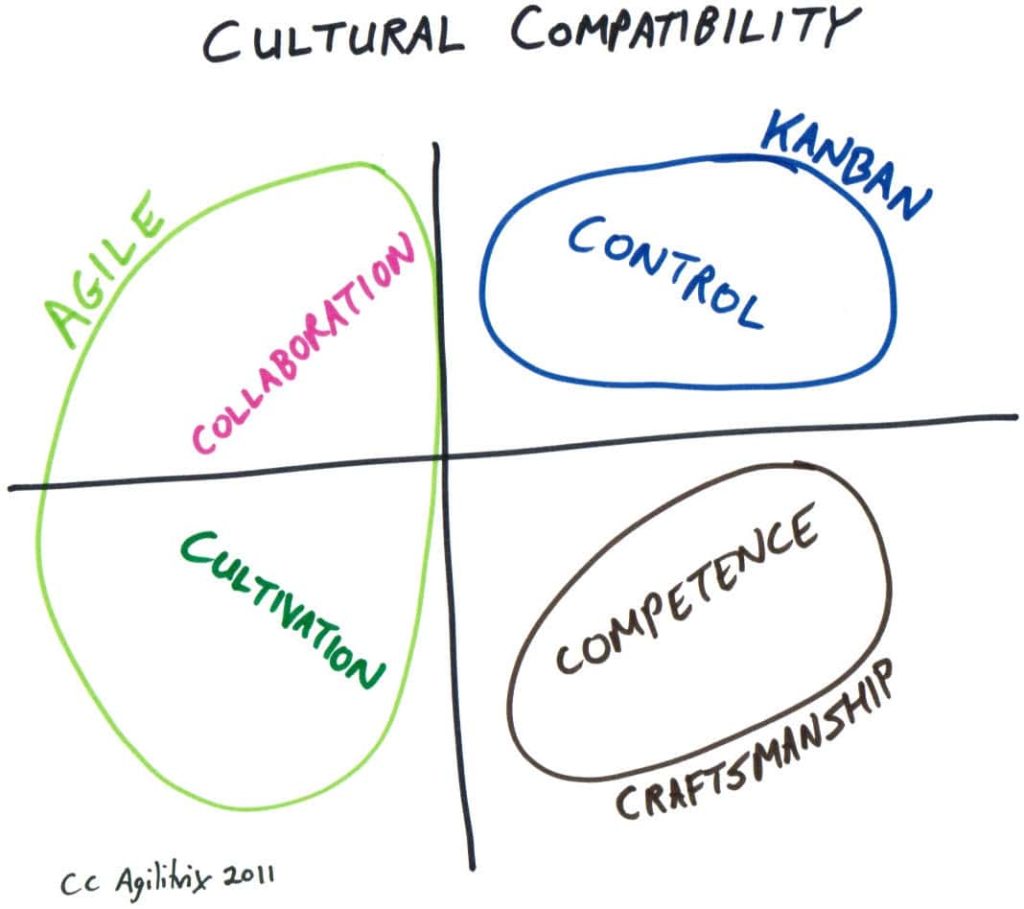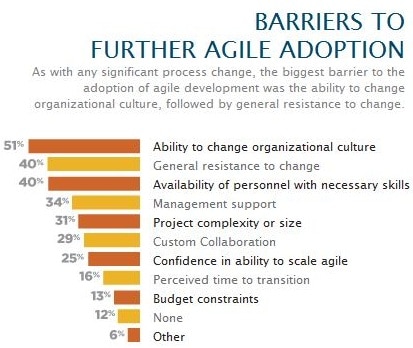At XPDays Benelux last November, Pascal Van Cauwenberghe told me that his main focus is to stop companies from doing Agile. I didn’t get it then. I think I finally understand.
(Note: Post used to be named “Problems with Agile? Check your Culture!”)
Agile (and Kanban) from the perspective of Culture
Rather than seeing Agile as universally great (aka silver bullet), I see it as a tool or philosophy that fits better in some company cultures than others.
Consider the following diagram illustrating how Agile, Kanban, and Craftsmanship principles align with various cultures. If, for example, you are working with a competence culture, then a good starting place is to focus on software craftsmanship and help them get really good at building quality software. Similarly, Kanban for control cultures and Agile for collaboration and cultivation cultures.

For this to make any sense, it would be advisable for you to check out the four related posts on culture:
- How to Make Your Culture Work (Schneider Model)
- Agile is about Collaboration and Cultivation Culture
- Kanban aligns with Control Culture
- Software Craftsmanship promotes Competence Culture
(Seriously, go read them now. They are pretty short and have great diagrams).
Rock my World
For me this is pretty profound. Cultural analysis provides me a tool for understanding clients and helping them where they are right now.
When a client contacts me as a coach, it is because they want help. What they think they need is a better process to help them with their problems. They do not want to change their company culture – they just want results. Well, depending on their company culture Agile may fit or it may not. Perhaps this is why many of us are experiencing the Post-Chasm Agile Blues.
A lot of my clients ask for Scrum and I am actively working on helping them understand where they are and where Scrum will take them. This is part of stepping away from one-size-fits-all. Scrum isn’t a good idea for every company. That should be obvious, but true believers may want to burn me at the stake.
What this means is that we may need to act more like a consultant than an Agile Coach. Some people have already been doing this to greater or lesser extents. A good example is David Hussman, who shares his thoughts on Coaching and Producing Value.
Empirical data that Culture is the Problem
Courtesy of VersionOne, I would like to share a snippet of the results of their 2010 Agile Survey. Thank you, VersionOne! (The image below is copyright VersionOne and is reproduced without permission).
Note that:
- The #1 problem (51%) is cultural change
- The #2 problem (40%) is resistance to change
Maybe it’s time we start paying attention to Culture!
Cargo Cult and Being Agile
There is the famous line from Ken Schwaber about 75% of companies not getting the expected benefits from Scrum that they expect. Why?
Scrum is a disruptive, transforming technology and most companies don’t want to be disrupted or have some Agile consultant tell them how they need to change their core culture to succeed. (But we don’t actually tell them, we just create lots of conflict and may even create a mess). So what is the result? Lot’s of Cargo Cult behaviour where people Do Scrum (or worse Scrum, But) without Living Scrum or Being Agile.
What do I mean by be Agile? Fortunately, some great minds in our community have written on this topic, so you can go read their stuff:
- Tobias Mayer has written about how Scrum is much more about changing the way we think than it is a process. For example, two good posts on this are The People’s Scrum and Scrum: An New Way of Thinking. I think what he is getting at is the essence of being Agile.
- Bob Hartman has a great presentation on this topic – Doing Agile isn’t the same as being Agile.
- Mike Cottmeyer wrote a series of great posts on how companies are adopting Agile, not transforming to Agile.
Post-Agile? Agile-AND?
What I am saying aligns with the concept of becoming Post-Agile. If it means using tools beyond Agile, then I am there and so are most people practicing Agile.
I like the term Agile-AND. I still like and use Agile. AND I use other tools and approaches depending on the situation.
We as a community need to get better at communicating when and where to use Agile and more importantly when not to.



